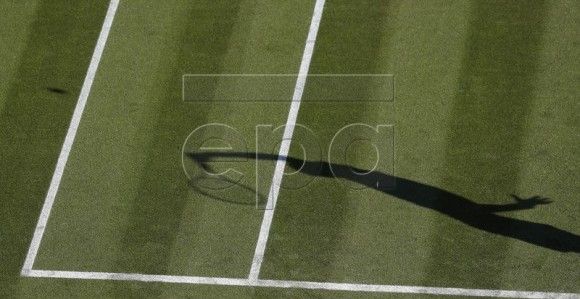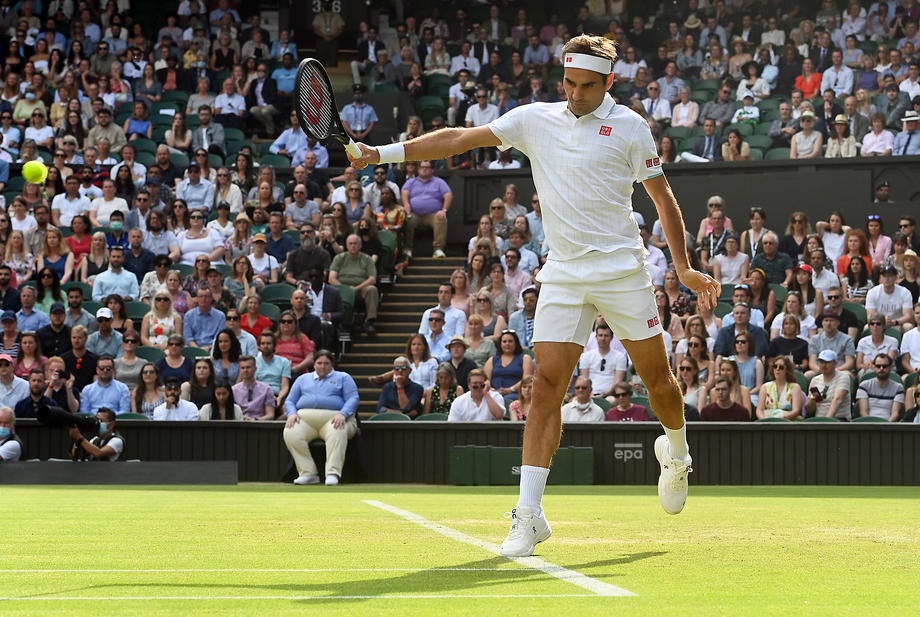- Stars Join Forces for Eisenhower Cup Return to Indian Wells on March 4
- Ken Thomas Broadcasting from Georgia’s Rome Tennis Open
- Solinco Launches All-New Whiteout V2 Racquet
- Stringlet: Serving Up Tennis Inspiration With A Twist
- Davis Cup qualifying to feature Brazil vs. France and Spain vs. Switzerland
- 2025 US Open Expands to Sunday Start
- Tennis Channel To Broadcast U.S. Davis Cup Qualifier vs. Tawain
- Stefanos Tsitsipas Receives Rotterdam Wild Card From Richard Krajicek
- Tien and Basavareddy to Play Delray Beach Open Qualifying
- Australian Open Tennis 2025 Ends with Madison Keys and Jannick Sinner As Winners By Alix Ramsay
- 2025 Australian Open Final Draws
- Jannik Sinner Sweeps Alexander Zverev for Second Straight Australian Open Title
- Ricky’s pick for the Australian Open final: Sinner vs. Zverev
- Australian Open Draws and Order Of Play for Sunday, January 26, 2025
- Madison Keys Upsets Defending Champion Aryna Sabalenka in Australian Open Final Thriller
Wimbledon 1951 Winner • AMERICAN Dick Savitt • A Look Back In History of Tennis
- Updated: July 3, 2018

Novak Djokovic of Serbia serves to Tennys Sandgren of USA during their first round match during the Wimbledon Championships at the All England Lawn Tennis Club, in London, Britain, 03 July 2018. EPA-EFE/NIC BOTHMA
By Nancy Gill Mc Shea
I chatted today with my friend Dick Savitt, the 1951 Wimbledon and Australian singles champ, and asked him if he still felt excited about winning the Wimbledon singles title 67 years ago. “Yes, it’s still a great feeling!” he said simply. Dick, a modest man who turned 91 this year, covers up his warm, generous nature with brief responses and a quick, dry sense of humor.
Don Budge once called Dick to practice when he was a young guy living at home. Dick’s Mom didn’t know who Budge was and told him he had the wrong number. Dick tried to jump over the couch to get the call and then parked himself in the vicinity for hours hoping the phone would ring again.
I once sat with Dick at the U.S. Open, stood up and announced rather loudly, “Do you think everybody here knows you won Wimbledon and Australia?” He reprimanded me sharply: “That’s enough. Sit down!”
You get the picture. If you ask Dick too many questions about himself or his tennis career, he gets edgy and deadpans like Jack Webb of the old Dragnet television show: “Just the facts, Ma’am, just stick to the facts.”
So we’ll stick to the facts here. And the facts are considerable!
In 1951, Savitt was a 24-year-old veteran of the U.S. Navy, a Cornell graduate and a self-taught tennis player from South Orange, N.J., who stunned the tennis world when he swept the Australian and Wimbledon singles titles. By winning two of the sport’s four Slam Championships, he established himself as the world’s No. 1 amateur tennis player (before the start of the professional Open Era in 1968), and became the first player to win both championships in one season since Don Budge accomplished that feat in 1938.
To win the Australian, Savitt dismissed three native Aussie champions, defeating John Bromwich (’39 and ’46) in the quarterfinals, Frank Sedgman (’49 and ’50) in the semifinals and Ken McGregor (’52) in the finals. “The Australian was a big shock to the tennis world,” Savitt said. “It put me on the map.”
At Wimbledon, Savitt again beat McGregor for the title in one of the shortest finals ever played on Center Court of the All-England Lawn and Tennis Club. Excerpts from the July 7, 1951 issue of The New York Times captured the drama: “Savitt beat the Australian Davis Cup player, 6-4, 6-4, 6-4, in 63 minutes before a standing–room crowd of 15,000. The…American culminated his first foreign tour and his initial Wimbledon appearance with the finest array of passing shots seen in this 65th staging of the game’s best-known tournament. Savitt showed tension in the first few games, but after that his booming service and forehand and the most devastating backhand he ever has shown proved too much for McGregor. The 6-foot-3 Savitt broke McGregor’s service — his best weapon — five times…He finished with sharp backhand cross-court shots which upset the Australian’s net game. The end came with McGregor lying flat, his drawn face buried in the…grass. He had dived desperately but missed the title-winner, a sizzling forehand drive, by inches. The happy American tossed his racquet high in the air and let go a shout of triumph that echoed above the applause.”
Savitt said later that he remembered feeling more relieved than elated when he accepted the Wimbledon trophy from the Duchess of Kent. En route to the final, he had also eliminated Americans Art Larsen and Herb Flam, the singles winner and runner-up at the 1950 U.S. National Championships (now the U.S. Open). Ham Richardson remembers that “Flam had him a set and 5-1 (in the second), but Dick came storming back to win that set 15-13 and won the match in four.”
Savitt had taught himself to play tennis at age 13 by imitating Eastern’s better players (Larry Krieger and Jeff Podesta among them) at the Berkeley Tennis Club in Orange. Russell Kingman was then the president of both the USLTA and Berkeley, and he brought in Jack Kramer, Frank Kovacs, Bobby Riggs and Pancho Segura to play the New Jersey State tournament there. Savitt was a ball boy. “I had never seen tennis like that before,” he said. “I immediately got Don Budge’s book on tennis to learn how to hit strokes correctly.”
Said Dick’s son Bobby Savitt, once a ranked junior who won the 1981 USTA Father-Son Doubles Championship at Longwood with his Dad, “He’s the greatest father; he taught me everything. He’s one of the few guys who played at the highest level, studied the game, adapted to changing techniques and became a great teacher.”
Does it take brains to become a tennis champion? “No!” Dick Savitt said. “It takes four things: athletic ability, desire, good technique and experience.“ Those are the facts; just stick to the facts when you talk to that particular Slam champion.
Want a quick laugh From Dusan Vemic? click below
https://www.instagram.com/p/BkA_1JKDvdI/






